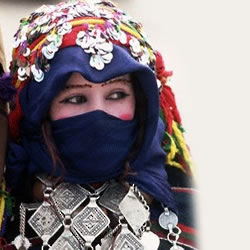SOME INFORMATIONS ON THE TRIBE OF AIT HDIDDOU AND THE MOUSSEM OF IMILCHIL'S FIANCAILLES
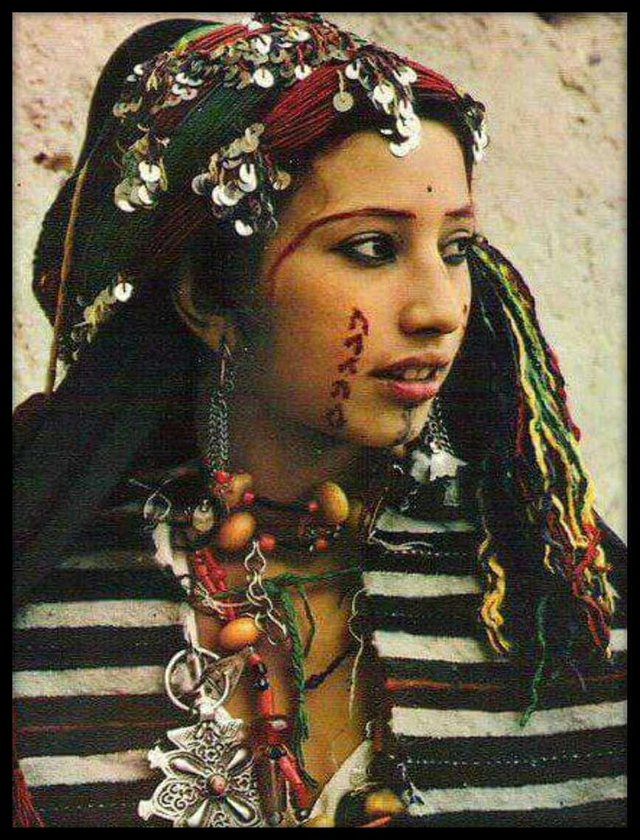
RIGINS OF AIT HDIDDOU
It was in the 17th century, under the reign of Sultan My Ismail, that Aït Hdiddou settled in the upper valley of Assif Melloul at 2,000 m altitude. They arrived in a migratory movement South / North or East / West and are distinguished from their mountain neighbors by the way of life and the language, living essentially of the breeding and the practice of agriculture like a secondary activity. The Aït Hdiddou opposed their Berber neighbors who are totally sedentary and who lived, above all, of an intensive agriculture with well-controlled techniques. Ait Hdidou speak TAMAZIGHT and a little Arabic.
After a period of fierce struggle against Aït Atta, Aït Hdiddou, part of the confederation of Ait Yafelman, were finally able to build their first village: AKDIM
In this regard, it is important to note that although the two fractions of Aït Hdiddou (Aït Yaazza and Aït Brahim) were able to preserve intact, their secular traditions and develop between them a certain number of social relations, such as family ties by marriage, they each have, in their own way, codified specific relations with the outside world.
II. HISTORY OF THE MOUSSEM
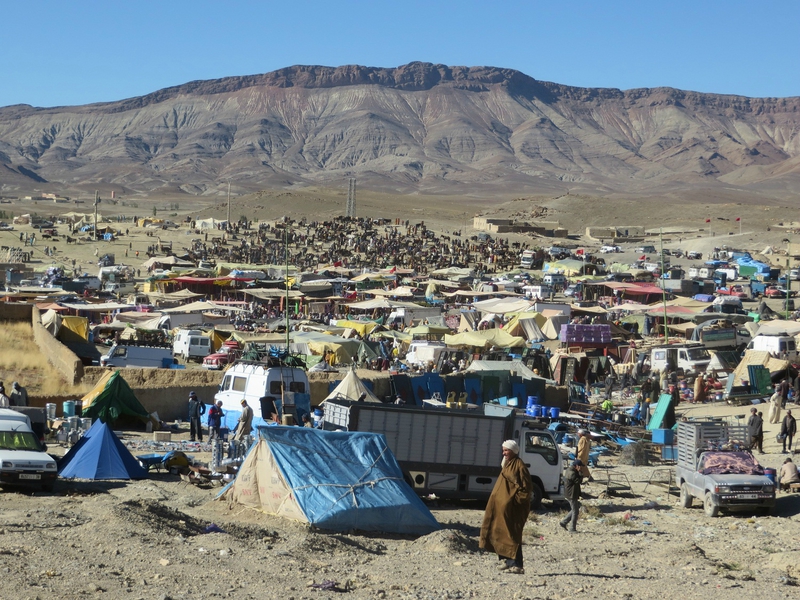
According to the testimony of certain elderly tribesmen of Aït Hdiddou, which consists of two fractions: Aït Yaazza and Aït Brahim, the young people of the tribe have made the habit of organizing a collective wedding party, at the end of every summer season. The festivities are grandiose when the harvest is fruitful.
Any visitor of the neighboring tribes is welcome, among the Aït Hdiddou who reserves him welcome and hospitality.
Feast days are animated by the famous dance of AHIDOUS, performed by Aït Hdiddou, to which only widowed and divorced women take part in the place they choose between men.
For the tribe of Aït Hdiddou the moussem is not a simple event, it is a gathering with triple vocation: commercial social and religious.
The meaning of the Berber word Imilchil, etymologically, means '' Imi n Lkil '' in Berber and '' Foum El Kail '' in Arabic ie '' the supply gate '', since the place of the moussem used to be a market for the exchange of certain agricultural products and handicrafts between the two sides of the Atlas.
This moussem is also known, among the Aït Hdiddou and the other peripheral tribes under the name "Agdoud n'Oulmghani" which means "the gathering of Oulmghani", in reference to the saint Marabout, Sidi Ahmed Oulmghani whose tomb rests on the place of Moussem. Some also call it '' Souk Aame '' the market of the year '' since it is the only occasion, formerly, to stock one time in the year without ever having recourse to other souks .
III. WHO IS THIS SIDI AHMED OULMGHANI
No popular or historical source has been able to specify either the date or time of arrival of this person in this region, or the veneration of which he was the object of the local population.
However, according to the elderly people of the tribe of Ait Hdiddou, Sidi Ahmed Oulmghani comes from a family of the Idrissid dynasty. He came from Yahoun in the Oujda region of eastern Morocco and settled in this tribe.
During the periods when the drought and the banks were raging, his Baraka, who fed their flocks, was solicited. Legend has it that camels and other animals that rest and spend the night at the current place of the moussem fatten overnight without there being grass on the spot ...
The memory of Aït Hdiddou still keeps the oral history of this saint whose body was found undecomposed following the discovery of a light that emanated from his tomb, and from then on the inhabitants gathered annually around his tomb in sign of gratitude to the Baraka of this great Saint.
IV. MARRIAGE OF AIT HDIDDOU
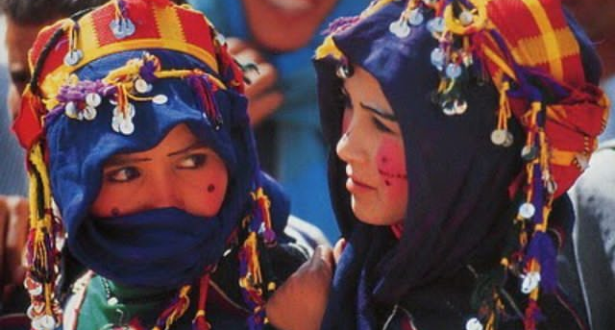
High resemblances and tiny differences thus mark the social symbolism of these two sisters, who form the Ait Hdiddou tribe. This opposition between openness and conservatism manifests itself above all, especially in marriage. Which will bring us to speak about the famous Moussem of engagement. If the Aït Brahim, under the influence of the protectorate modified the forms of their marriage, from collective to individual, the Aït Yaazza remained faithful to the previous form (collective marriage). One might wonder at this persistence in the fraction we have seen as the least conservative. This paradox could be attributed to the "historical" need for the identification of Aït Yaazza within the large family of Aït Hdiddou. The collective marriage thus appears as a "vestige" of the ancient times of the agro-pastoral way of life.
After a year of plowing and after the months and gatherings, the commemoration of the Moussem of Saint Marabout Sidi Ahmed Oulmghani crowns a period of which she announces the completion and opens the horizon of a new cycle that each one wishes better than the previous ones .
For the tribe of Aït Hdiddou the Moussem of Imilchil is not a simple event it is a gathering with threefold vocation: commercial, social and religious.
Without dwelling on the details, all alive, the moussem with its various neighborhoods is there. During this same day we had the opportunity to attend the engagement ceremony with all kinds of formality that implies. Five days during the ahidous and ancestral traditions will form the frame of this union.
Indeed, during the first day, the envoys of the husband said "ISNAYEN" to the number of 10 (5 men and 5 women) going to the house of the bride with a modest trousseau and wedding gifts among others a sheep and a big slab called ABADIR that the ISNAYEN cut out at the ceremony in small pieces and distribute to the wedding assistants. They are warmly welcomed by the guests of the bride. Soon the great henna ceremony takes place. A group of women surrounds the bride and begin the famous henna ritual.
An elderly woman using a bottle of wool soaked in henna, marks the bride at a few joints beginning with the right side using a woolen interlaced thread, it connects to the base of the fingers of both hands of the bride (IZELOUMEN) she is then dressed in a white coat of the husband (AQUIDOUR).
- For the hairstyle, the hair of the bride is combed and wound in prominent form commonly called (ABOUY). (See photo in Album)
His face is then veiled with a silk scarf said TASBNIYETE and an amber necklace says LOUBAN is put around his neck. A simple cover says IZAR is stapled with fibula called "TISOUGHNASSE".
Once the bride pavement of Babouches TIKOURBIYINE and embellished by some aesthetic retouches the ritual of henna ends, then comes the stage of departure; the father of the bride invites his daughter to walk on the side of his cloak (BURNOUS says AZENAR) to his horse: the mule that will transport her to his new home will carry behind the bride a boy while an old woman follows holding the mule by its tail.
The accompanying procession protected by the envoys of the husband must overcome the resistance delivered by the inhabitants of the ksar of origin of the bride who strongly oppose his departure.
Arriving at the destination, the procession goes around the ksar 3 times, exhorting the local saints to give their blessing to the bride, who finally reaches the marital home.
Lastly, before becoming a member of the bride's foster home, a small child on the back, a bucket full of date in hand goes to the nearest water point, the last one Ahidous is offered in honor of the tide, which by way of recognition distributes the contents of its bucket that it filled with water before returning home. the bride holds a lamb in her arms and always the little boy on the back all on the mule to his new home.
V- THE ACT OF MARRIAGE
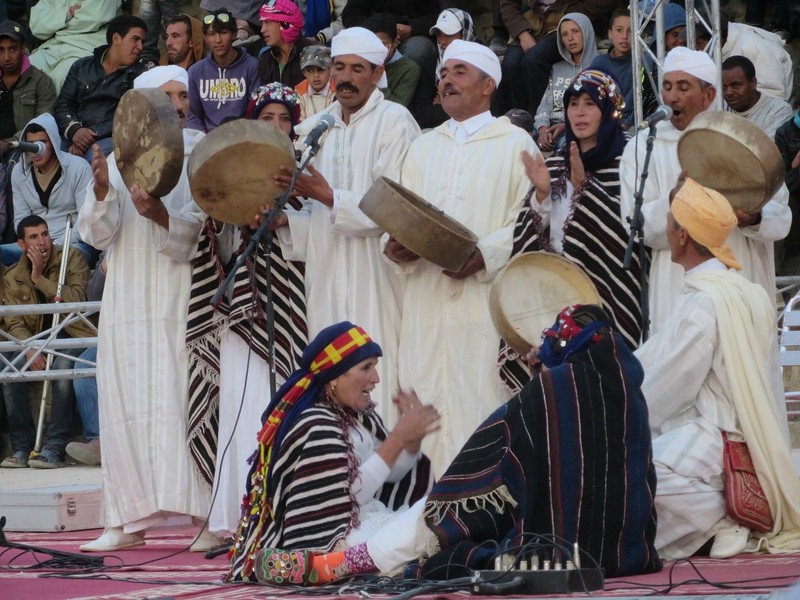
After the consent of the future spouses, the families preceding the formalities of marriage, this is how the parents of the young man ask for the hand of the girl desired by their son. The establishment of the act of marriage can be done immediately, as it can be postponed until the holding of the mousem.
The young spouse or his guardian offers a symbolic gift to his future wife, while the girl's father takes care of the purchase of his clothes during the first year.
The entire tribe expressed their joy by participating in the wedding ceremony, characterized by songs and dances during five days of celebration. Guests can enjoy all sorts of dishes from Ait Hdiddou's cuisine, especially the different types of bread that we described later.
VI- CULINARY ART
In addition to couscous, Tagine and other recipes introduced in the kitchen of Ait Hdiddou, it is much more characterized by the richness of the different kinds of bread that prepare the people on various occasions.
We are now describing the 3 types of bread known to this tribe:
1- ABADIR
It is a large loaf of 1 meter in diameter, consisting of:
- 25 kg of refined wheat flour;
- 10 liters of water
- 20 grams of salt;
without the use of yeast.
This bread is prepared by the men, they put the dough which is about 5 cm thick on a set of pebbles already heated and cleaned of ash, then it is covered with ash and plants, including sagebrush that burn for a long time. hour. Finally the bread is cooked when you do the same operation by putting fire on the other side of the dough for an additional hour. This Abadir bread can be kept for a week, it can feed up to 40 people, and the family of the bride presents it as a gift to that of the bride.
2- BAHMMOU
It is a round loaf, its diameter exceeds 15 cm. It is prepared by wrapping a stone with a round shape. This bread is also prepared without yeast. It is known that shepherds put this bread in the hood of their djellabah to eat it and warm their backs in cold weather.
3- AHATTOUCH
It is a normal bread containing extracts of some medicinal plants picked in the mountains.
VII- CRAFTS
1- ironwork: this consists of the manufacture of window-grates, furnaces, stoves, locks, articles and instruments intended for agriculture such as: ax, pickaxe, sickle, hammer, irons, bridles in addition to cooking utensils, knives, braziers, tripod.
2- The weaving: the woman of Ait Hdiddou is an artist who makes wool of the beautiful clothes, in particular: the cloak, the burnous, the Adjellabah, the trousers, the socks
3- Man shapes wool useful objects such as: wool shoes, arm guards, socks ... etc.
VIII- CLOTHING AND COSTUMES
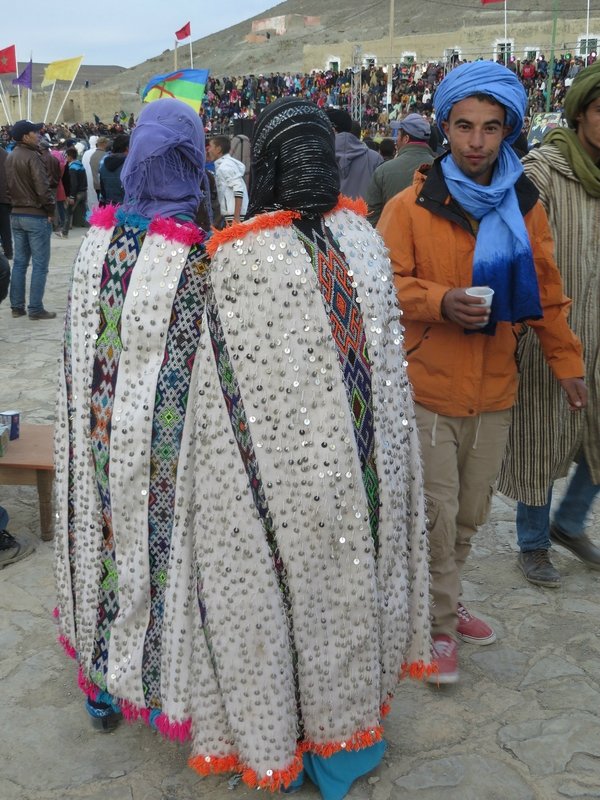
In general, the woman of Ait Hdiddou expresses herself more than any other by her clothing which is more "sign" a "protection". through clothing and hairdressing, she expresses her resistance or her adherence to social changes. Resistance, it is true more claimed by the women of Ait Brahim than that of Ait YAazza. Thus the garment is no longer "tradition" but "Traditionnalization".
- The "headdress" "Aqlous" elevated among married women, flat in girls, is de rigueur among women Ait Brahim, but simple ornament on holidays at Ait Yaazza.
- The cape called "tahendirt" too, has its small difference. Wool fabric with vertical stripes of 4 basic colors (indigo, black, red, white) for the Ait Yaazza, plus stripes worms for women Ait Brahim.
1- Ait IAAZZA
The female dress of this manufacture of the tribe of Ait Hdiddou is composed of:
- a gandoura called AKIDOUR covered with a large white cloth held by fibulae at the chest;
- White pants ;
- amber necklace;
- silk scarf known as tasbniyt, kept on the head by red and green silk cordlets adorned with agent glitter;
- the hair is combed and wrapped in round shape at the level of the ears (Aabrouk)
- the belt is in the form of a cord made of pure wool, it is called. Tasmart
- a zebra cloak made of wool whose stripes are white, black and red;
- babouches in baking adorned with agent glitter and often lined with different colors;
- the silver earrings.
2- AIT BRAHIM
The female costume is as follows:
- Gandoura in the form of a white cloth plus white trousers;
- The belt: woolen cord of different colors decorated with silver glitter
- Black woolen cape with white and red stripes
- Babouches in baking decorated with glitter or lined with threads of agent;
- The head is covered with a silk scarf (Tasbnyt), supported by red and green cords around the head
- Silver bracelets at the rate of 2 per hand;
- the fibulae are used to rentier the fabric and the cape at the level of the chest;
- The hairstyle of the bride's hair is combed and wound into a prominent shape commonly called abouy;
- Amber pendant set around the neck: loubane
- Braces supporting the coat in the armpits.
As for the male habit, it is generally common to the two fractions of the tribe of Ait Hdiddou. The men are wearing Djellabah covered with a burnous all in pure black or white wool and a turban on the head, as a hairstyle.
